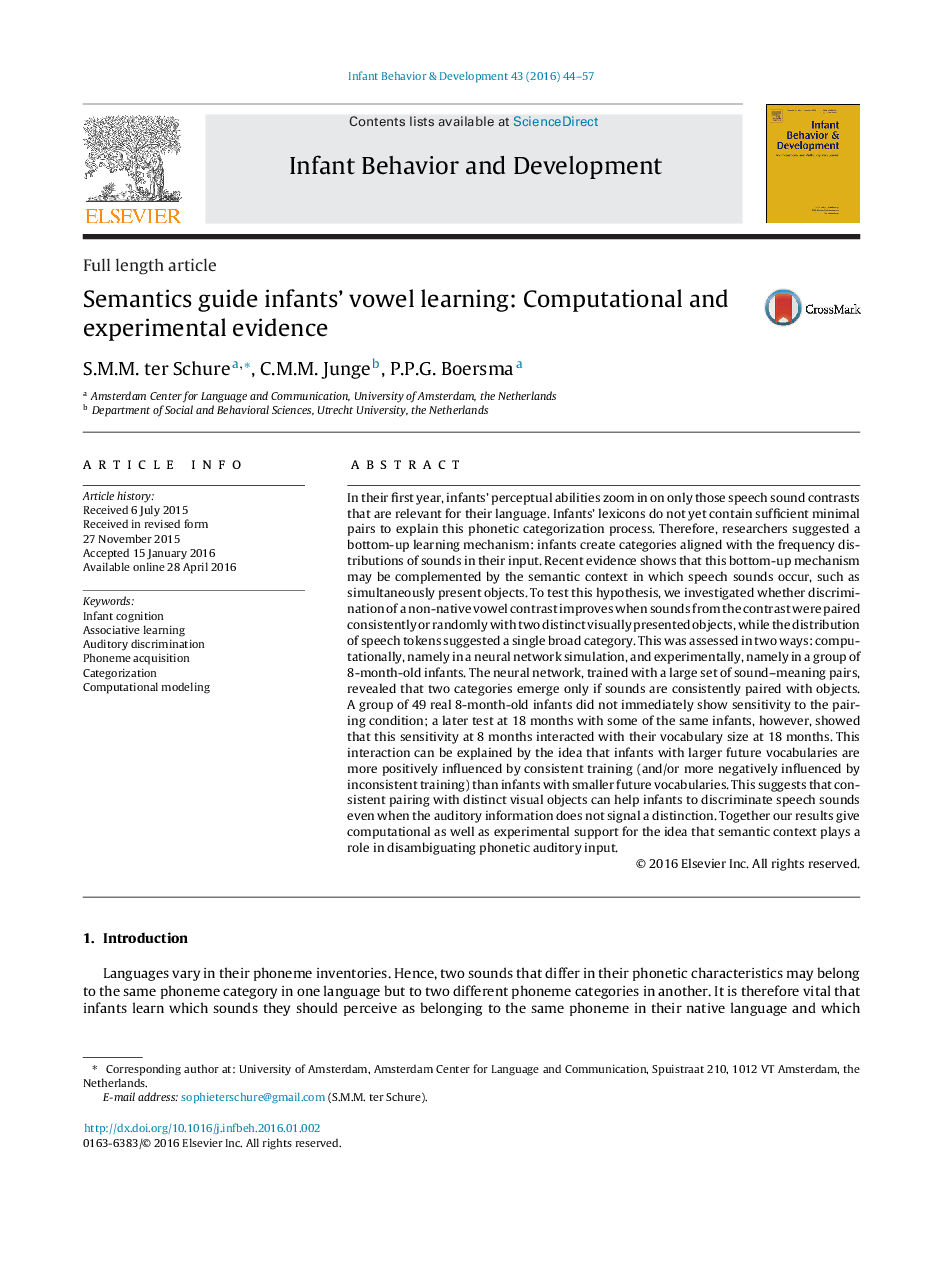| کد مقاله | کد نشریه | سال انتشار | مقاله انگلیسی | نسخه تمام متن |
|---|---|---|---|---|
| 917132 | 1473417 | 2016 | 14 صفحه PDF | دانلود رایگان |
• We investigate the effect of semantic cues on learning a nonnative phonetic contrast.
• We exposed both a computational model and 8-month-old infants to sound-meaning pairs.
• Only consistent training spawned the emergence of a phonetic contrast in the model.
• In infants, effect of sound-meaning training was mediated by future vocabulary size.
In their first year, infants’ perceptual abilities zoom in on only those speech sound contrasts that are relevant for their language. Infants’ lexicons do not yet contain sufficient minimal pairs to explain this phonetic categorization process. Therefore, researchers suggested a bottom-up learning mechanism: infants create categories aligned with the frequency distributions of sounds in their input. Recent evidence shows that this bottom-up mechanism may be complemented by the semantic context in which speech sounds occur, such as simultaneously present objects. To test this hypothesis, we investigated whether discrimination of a non-native vowel contrast improves when sounds from the contrast were paired consistently or randomly with two distinct visually presented objects, while the distribution of speech tokens suggested a single broad category. This was assessed in two ways: computationally, namely in a neural network simulation, and experimentally, namely in a group of 8-month-old infants. The neural network, trained with a large set of sound–meaning pairs, revealed that two categories emerge only if sounds are consistently paired with objects. A group of 49 real 8-month-old infants did not immediately show sensitivity to the pairing condition; a later test at 18 months with some of the same infants, however, showed that this sensitivity at 8 months interacted with their vocabulary size at 18 months. This interaction can be explained by the idea that infants with larger future vocabularies are more positively influenced by consistent training (and/or more negatively influenced by inconsistent training) than infants with smaller future vocabularies. This suggests that consistent pairing with distinct visual objects can help infants to discriminate speech sounds even when the auditory information does not signal a distinction. Together our results give computational as well as experimental support for the idea that semantic context plays a role in disambiguating phonetic auditory input.
Journal: Infant Behavior and Development - Volume 43, May 2016, Pages 44–57
